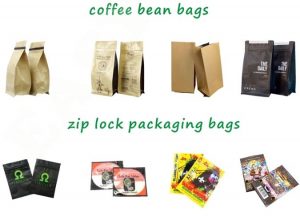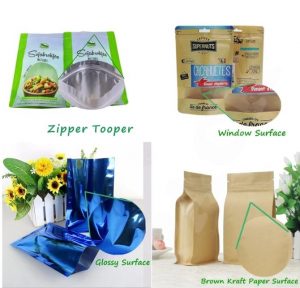Innovative food packaging solutions continually emerge to address environmental concerns, food safety, convenience, and consumer preferences. Here are some notable examples of innovative food packaging solutions:
- Edible Packaging: Edible packaging is made from materials that are safe to eat and can complement the product’s flavor. Examples include seaweed-based packaging, rice paper wrappers, and edible coatings for fruits and vegetables.
- Biodegradable and Compostable Packaging: Packaging made from biodegradable materials like cornstarch, sugarcane, or mushroom mycelium breaks down naturally over time, reducing the environmental impact.
- Plant-Based Plastics: Bioplastics derived from plant sources, such as corn or sugarcane, offer a more sustainable alternative to traditional petroleum-based plastics.
- Active and Smart Packaging: Active packaging incorporates components that interact with the food to extend shelf life and preserve freshness. Smart packaging includes indicators like temperature sensors or RFID tags to monitor the product’s condition and ensure safety.
- Modified Atmosphere Packaging (MAP): MAP involves altering the air composition inside the package to slow down spoilage and preserve food quality. It can extend the shelf life of perishable products.
- Vacuum Skin Packaging (VSP): VSP tightly wraps the product with a transparent film, reducing the need for excess material and providing an appealing display of the food.
- Nanotechnology-Enhanced Packaging: Nanomaterials can be incorporated into packaging to improve barrier properties, antimicrobial effects, and strength, reducing food waste and increasing shelf life.
- Reusable Packaging: Reusable containers and systems encourage customers to return packaging for refilling or recycling, reducing single-use waste.
- Minimalist Packaging: Simple and lightweight designs with fewer materials not only reduce waste but also enhance the product’s eco-friendly image.
- Self-Cooling Packaging: Some packages incorporate self-cooling technology, eliminating the need for refrigeration during transportation and storage.
- Recycled and Upcycled Packaging: Using recycled materials for packaging or upcycling waste materials into creative packaging solutions help minimize the environmental impact.
- Nano-Enabled Packaging for Food Authentication: Nanotechnology can be used to create unique identifiers for food products, ensuring authenticity and preventing counterfeiting.
- Sustainable Labels and Adhesives: Labels made from recycled or sustainable materials and eco-friendly adhesives help improve the overall sustainability of the packaging.
- Alternative Delivery Methods: Packaging innovations are extending beyond traditional containers to explore alternative delivery methods, such as edible cutlery, food pouches with built-in straws, and collapsible packaging for space-efficient storage.
These innovative food packaging solutions reflect the industry’s commitment to sustainability, convenience, and consumer safety. As technology advances and consumer demands evolve, we can expect further advancements in food packaging that contribute to a more sustainable and efficient food system.








